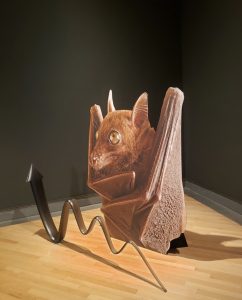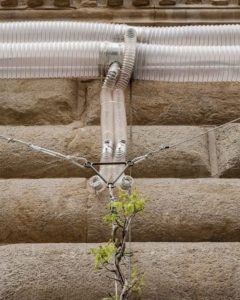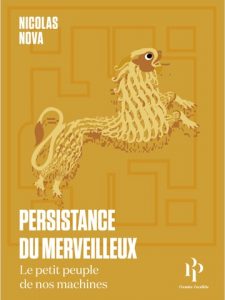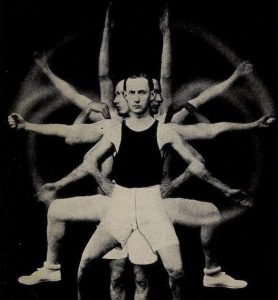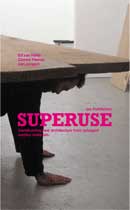 Superuse – Constructing new architecture by shortcutting material flows, by Ed van Hinte, Jan Jongert and Césare Peeren.
Superuse – Constructing new architecture by shortcutting material flows, by Ed van Hinte, Jan Jongert and Césare Peeren.
Editors say: You could recycle, discard or even burn them of course: cable reels, window frames, washing machines, diapers, crates, carpet tiles, double glazing panels or old buses. The other option is to put them to good use: Superuse. It happens everywhere, albeit on a modest scale. Architects apply these materials in their designs. It requires special attention and new skills, but the resulting images can have quite unexpected qualities.
Superuse, about the construction of new buildings with surplus materials is a practical and inspiring book. It was initiated by the Rotterdam Recyclicity foundation, that specifically addresses this theme.
You know how green issues, sustainability, re-use are often associated with dull, un-stylish and ugly objects and buildings no one would really lust for. The authors of Superuse demonstrate that such prejudice needn’t be but they are not the only ones to do so. What makes their approach unique though is that the examples they list make the reuse idea quite fun. I also liked the fact that they are aware of several drawbacks that hamper the best intentions and even included in the book an interview with Taeke de Jong, Professor of Ecology at he University of Technology in Delft, who didn’t try to hide his scepticism.
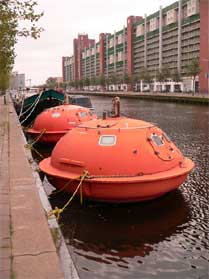
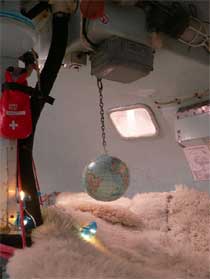 Capsule hotel by Denis Oudendijk
Capsule hotel by Denis Oudendijk
Reuse alternative have spread out in the design and fashion world but there’s still much to be done on the architecture front. Two main reasons: the building process is rooted in a strong artisan tradition that doesn’t allow for more than marginal changes and the idea that the architectural discourse deals with particular kinds of aesthetics and materiality that usually overlooks any use of existing elements to create buildings.
A crucial element in the process of superuse is to find materials and parts. 2012 Architects proposes to use a “harvest map”, a 50km diameter map of the area around a building site. On top of it the map indicates general ideas of transportation needs.
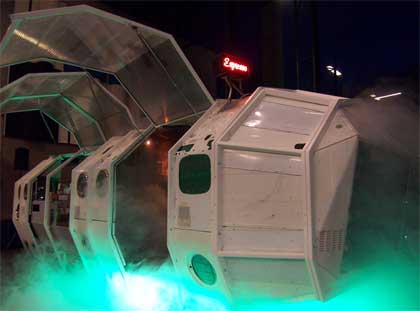 The Miele Space Station
The Miele Space Station
Superuse calls for more than maps, it needs
– people who could be regarded as “superuse scouts”, able to recognize opportunities,
– people who would have a knowledge similar to the one needed for sabotage, except that the aim would be constructive. They would know how to cut and take apart parts in a clever way,
– special tools and machines for reworking the elements,
– products that could be more easily assembled or even better, products designed to be re-used.
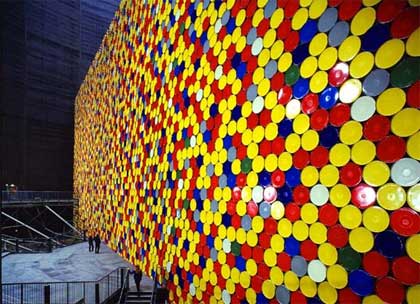 The Wall
The Wall
Superuse might also come with some unwanted side effects. “As soon as waste gets a value, it can no longer be considered a waste,” explains industrial designer Mark Goedkoop. When Philips started to produce energy efficient PL lamps, consumers used them in places that wouldn’t have had lighting earlier on which in the end is not what sustainability should be about.
Now for some nice examples of Superuse:
The Miele space station, built by Architects 2012 as an espressobar, from (mainly Miele) washing machines and found steel tubes. The bar and kitchen elements are built from wasted billboards and grips are from planeseatbelt-fittings.
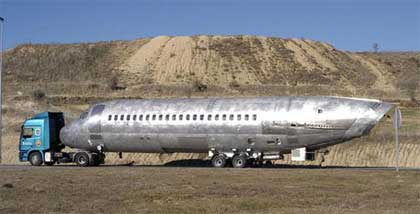
Spanish organisation Avion found a plane in a dump after it had crashed some years ago. They stripped the DC-9 to the bone and turned it into a lorry for exhibitions and performances. The height allows the refurbished DC-9 to pass most European standard flyovers.
One of the nicest projects involving the use of plane is LOT-EK‘s proposal for the Jalisco Library, Gudalajara, Mexico competition. Their plan was to stack over 200 Boeing 727 and 737 fuselages in a north-south slant in relation to sun exposure for energy efficiency.
The Wall, built by Christo and Jeanne-Claude located inside a Gasometer in Oberhausen, Germany. The 13,000 oil barrels structure might be what inspired their Mastaba project in Abu Dhabi which will count 400,000 barrels.
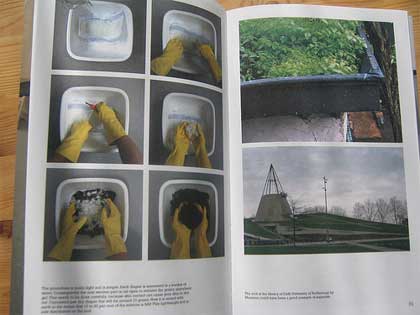 Diapers Roof Garden
Diapers Roof Garden
Qenep harnessed the super absorbing polymers of non biodegradable diapers (they can hold up to half a liter of urine, a by-product that is known to be a very good source of nitrogen for plants) to build a light roof top garden composed of these diapers in The Hague.
More information about superuse on the website (first discovered at Edgar‘s place), an online community of designers, architects and everybody else who is interested in inventive ways of recycling.

